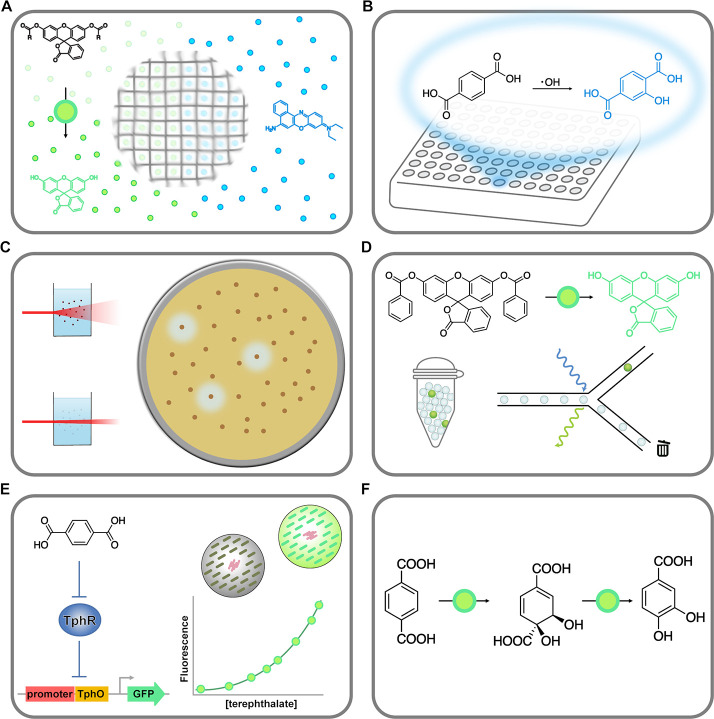Figure 4.
Potential PET hydrolase screening methods arranged in order of increasing potential throughput. (A) Fluorogenic substrates like fluorescein dilaurate can be trapped in polyester films or particles175,176 and can be released and hydrolyzed upon polymer hydrolysis, generating a fluorescence signal. (B) Fluorimetric method based on the reaction of terephthalic acid with hydroxyl radicals to form the fluorophore 2-hydroxyterephthalic acid.177−179 Tens of thousands of clones can be screened using microtiter plate-based assays (A, B). (C) Agar plate assay based on the hydrolysis of polyester (PET) nanoparticles.75,180,181 Clear zones (halos) form around clones expressing active polyester-hydrolyzing enzymes, allowing simple visual identification. Millions of clones can easily be screened using this method. (D) Recently reported ultra-high-throughput droplet-based assay for PETase activity.182 The use of the fluorogenic surrogate substrate fluorescein dibenzoate indicates a low selectivity, since many other esterases would also be identified using this assay. Tens of millions of clones could be analyzed using this method. Combinations of the turbidimetric assay (C) and droplet-based methods (D) seem promising. (E) Ultra-high-throughput assay based on a terephthalic acid biosensor.183 Cells could be entrapped in hydrogel beads184 containing reporter cells that express GFP in response to terephthalic acid formed by clones expressing active PET-hydrolyzing enzymes. Because fluorescence-activated cell sorting (FACS) can be used to sort the beads, the throughput of this method is potentially in the hundreds of millions. (F) Envisaged growth selection approach based on the conversion of terephthalic acid to protocatechuic acid, which could be catabolized by engineered strains of E. coli or other model organisms.183,185 The throughput of this method would be limited only by library size and transformation efficiencies, making it one of the most attractive methods.

